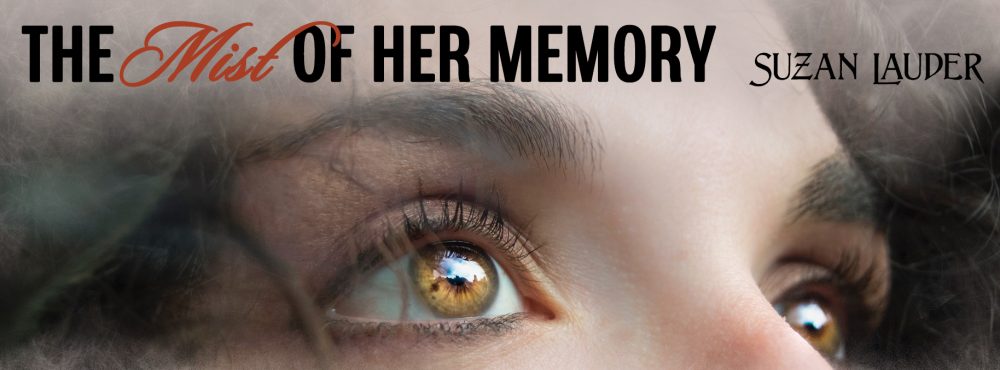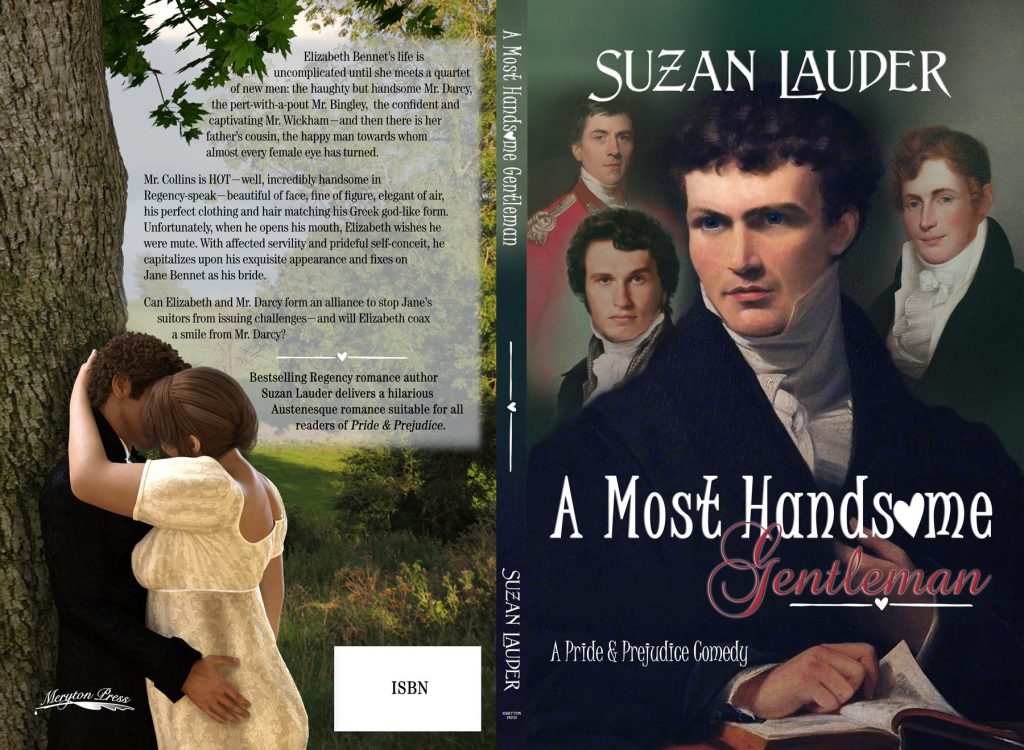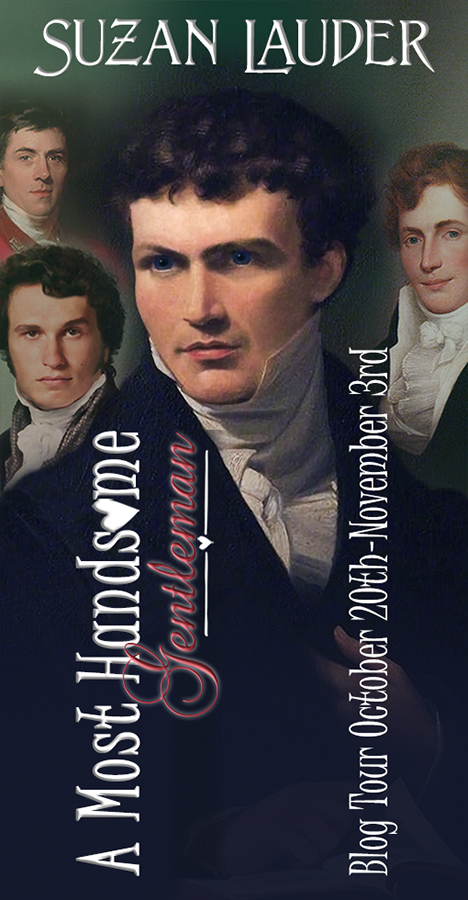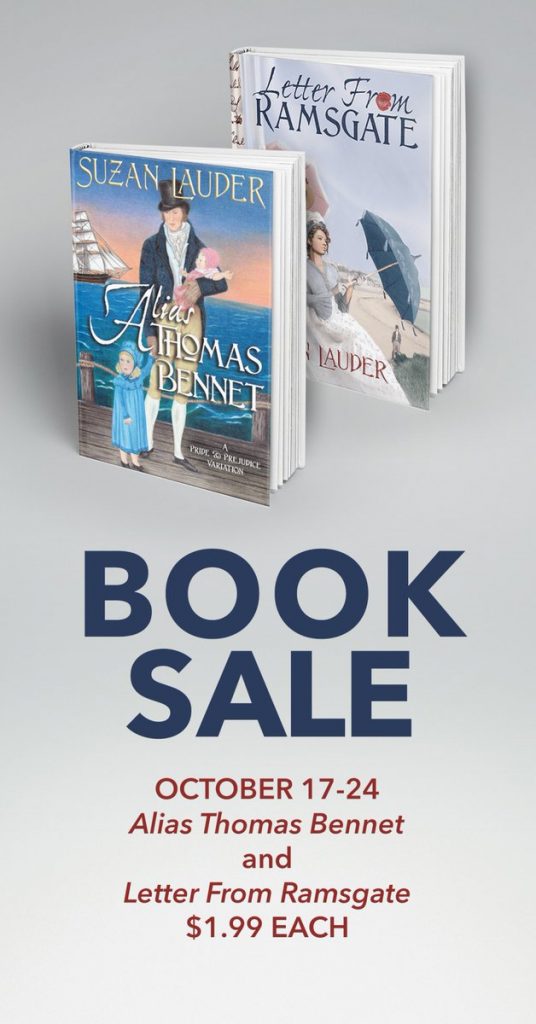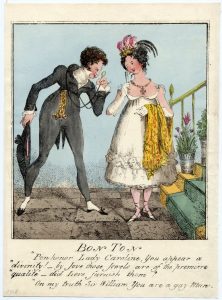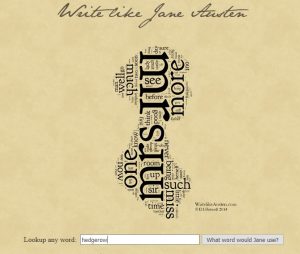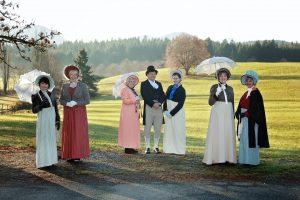On New Year’s Day 2018, the price of A Most Handsome Gentleman will be reduced for 24 hours to $2.99, an excellent price for a Meryton Press book. To help celebrate my book’s sale, I’m sharing an excerpt that was planned for the blog tour, but fewer excerpts were requested by bloggers than I had prepared. Of course, the number of excerpts was balanced by more of the other kinds of guest spots as detailed (with links) in my last blog post.
(Aside—the 24 hour sale is available only in the US and UK because this option is not offered to publishers by Amazon in other countries. Sale hours are PST in the US, GMT in the UK).
Today’s excerpt is a behind-the-scenes moment from Jane Austen’s Pride and Prejudice, and details the excitement when the Bingleys have dropped by to invite the Bennets to the Netherfield Ball—and handsome Mr. Collins is invited as well. It’s from the point of view of Miss Elizabeth Bennet.
~~~
“A ball!” was repeated over and over as if my sisters required assurance that it actually had been said, and Lydia and Kitty first clasped each other’s hands and bobbed up and down, then continued the same activity with everyone else in the room. Mr. Bingley chuckled, not at all displeased with my sisters’ enthusiasm. Even Miss Bingley, elegantly attired in the most fashionable gown with an elaborate chemisette, found their raptures amusing as her mouth tilted sideways in a half smirk, though whether in disdain, self-importance that her invitation was the cause of this delight, or pure enjoyment of the scene was not clear to me.
Mr. Collins slid into the room, no doubt curious regarding all the noise, and my two youngest sisters rushed to greet him and share the good news. He held his hands in the air, palms forward, and tried to frighten them with his glare, but they both just giggled before resuming their seats and chattering, heads close together, peeping at Mr. Collins with alarmingly lascivious expressions.
Dear Jane spoke for us all and graciously accepted on behalf of our family. My cousin spun to face her with a queer expression. One brow was tucked down in the middle of his face, and his lip and nostril on the same side were raised, as if he were questioning something unpleasant—or possibly even unseemly—at least, to him it was.
Rather than continue my attempt to decipher his strange expression, my recent discussions with Mr. Collins made me bold enough to question him. “Sir, do you not intend to accept the invitation? Perhaps you do not believe it a proper amusement for young people, yet I am certain Mr. Bingley hopes you will join us, even if you may object to dancing yourself.”
“On the contrary, Cousin Elizabeth. Both the Archbishop and Lady Catherine admire my ability to discern the difference between wholesome entertainment and activities unbecoming to a cleric. A private ball given by a sensible gentleman and attended by respectable gentlemen such as myself has no tendency for evil. You know my generous disposition well enough by now—I could not deprive the neighbourhood ladies my hand in the dance. I also must take this opportunity to assure my three fair cousins that they will be among the first to stand up with me.” Lydia and Kitty faced each other with smirks and burst into giggles before they resumed their admiration of Mr. Collins. They must have become accustomed to him ignoring their existence.
Mr. Bingley took his point. “Indeed, Mr. Collins! We will be delighted to see you take your position in the line.” He addressed Jane. “Following your cousin’s good example, I request the first two dances of you, Miss Bennet.”
Jane’s cheeks are always a little pink, but at that moment, the colour flowed beyond its borders and across her entire face and onto her neck and upper chest left uncovered by her fichu. “I thank you, sir, I accept.”
Mr. Bingley’s face lit up. “Capital!” He glanced towards his sister. Miss Bingley tilted her head and offered a forced and weary smile. Her brother returned his beaming face to Jane, who could have been fevered again, she was so flushed. My poor shy older sister could not reflect his grand grin to share his elation, though she kept trying, peeking up through her lashes while her lips were curved up in the sweetest fashion imaginable, even for Jane. This was obviously encouragement, as he added, “And the supper dance?”
Everyone was diverted when Mr. Collins cleared his throat loudly. When he spoke, his voice was firm and chastising. “Mr. Bingley! Your assumption is not at all gentleman-like.” His tone was that of a parent scolding a child.
Mr. Bingley’s eyes went wide. “Excuse me, sir? I do not comprehend your meaning.”
“I am quite sure you do, sir. You are well aware that Miss Bennet is my cousin.”
Mr. Bingley hesitated, his expression further confused, if possible. “Y-yes?”
“I have priority.”
“Priority?”
I had to agree with the incredulity in Mr. Bingley’s voice. What sort of priority? What could Mr. Collins mean? I searched my cousin’s face, and his lips were pursed and his brow folded, yet he was still terrifically good looking. How could he manage such a feat?
~~~
Of course, it’s because he’s the hottest man to ever enter Hertfordshire! Or so it seems…
You’ll love the campy humour of this Pride and Prejudice variation. It’s not too long (I jokingly call it my mini-novel) therefore providing a quick and fun read.
I meant to post this excerpt early last month, but I didn’t want to draw attention away from the blog tour for Audrey Ryan’s debut novel All the Things I Know (the book is reduced to $2.99 tomorrow Jan. 2 only!). Then Christmas came, followed by a week-long bout of extreme vertigo, which is being minimized by exercises and should be over soon. The sale day for A Most Handsome Gentleman aka #HOTCollins seemed to be the best time to share a new excerpt, so here we are today. I’ll have the promised second excerpt and the article for Learning from My Mistakes in the next weeks.
